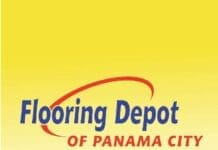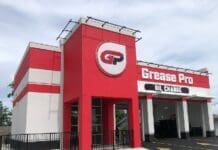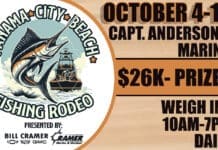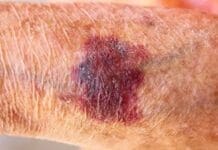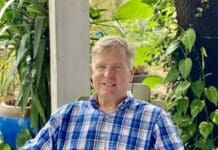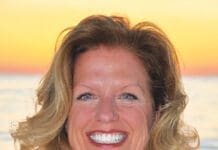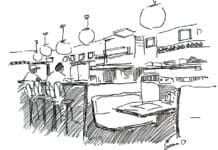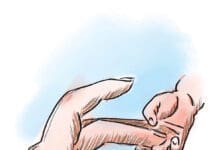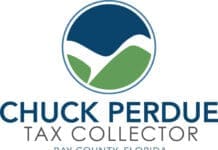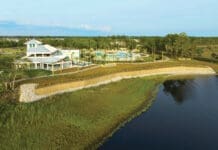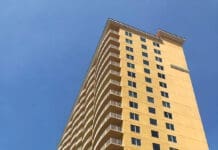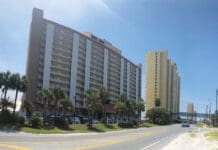Facility Aims to Protect Florida’s Native Species with Critical Rescue and Rehab Services
 Panhandle Wildlife Rescue (PWR) is proud to announce the grand opening of its new, full-scale wildlife rehabilitation center and hospital in Freeport, FL. PWR is a vital part of the Florida Panhandle, providing life-saving care and rehabilitation to native wildlife species across 11 counties including Walton and Bay.
Panhandle Wildlife Rescue (PWR) is proud to announce the grand opening of its new, full-scale wildlife rehabilitation center and hospital in Freeport, FL. PWR is a vital part of the Florida Panhandle, providing life-saving care and rehabilitation to native wildlife species across 11 counties including Walton and Bay.
The new facility will allow PWR to expand its mission of rescuing, rehabilitating, and releasing sick, injured, and orphaned wildlife, admitting between 1,000 and 2,000 patients annually. With a focus on medical care, orphan rearing, and intensive rehabilitation, PWR gives Florida’s wild animals a second chance at survival in one of the fastest-developing and ecologically rich regions in the country.
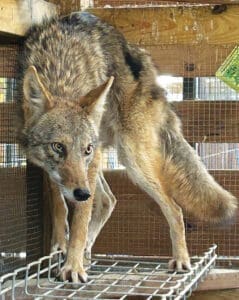 “The opening of this facility, thanks to a transformative donation from Ryan Jumonville and Family, marks a major step forward in our commitment to the wildlife of the Emerald Coast,” said Shelby Robinson, founder and executive director of Panhandle Wildlife Rescue.
“The opening of this facility, thanks to a transformative donation from Ryan Jumonville and Family, marks a major step forward in our commitment to the wildlife of the Emerald Coast,” said Shelby Robinson, founder and executive director of Panhandle Wildlife Rescue.
The Florida Panhandle is home to the most biodiverse terrestrial ecosystem in the contiguous United States. From the upland pine forests to the pelagic depths of the Gulf, PWR treats hundreds of species every year, striving to mitigate the growing impact of human development on native wildlife.
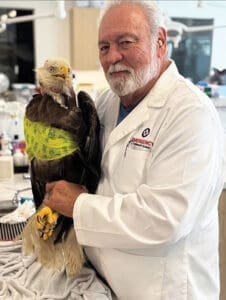 One of their current patients is a handsome bald eagle rescued from the side of a highway in Bay County, likely clipped by a car while feeding. Wildlife Harbor (WH), who help with many calls in Bay County, rescued him late one night. He was stabilized at WH overnight, then transferred to PWR the following morning for a thorough medical examination that revealed he had multiple metacarpal fractures on his left wing. These types of fractures are often difficult to stabilize because of birds’ hollow bones, and are also often injured during recovery due to their distal location. After PWR staff ran radiographs and bloodwork to check for the possibility of lead poisoning, PWR veterinarian, Dr. Phil Blumer, opted to surgically place a pin in the largest affected bone, a procedure that took just under an hour. Since the surgery, the eagle has been having daily physical therapy, laser treatment, and has been kept in an enclosure that prevents excessive movement. During his last doctor’s visit, he has shown great signs of progress but still exhibits a limited range of motion and will require weeks more of physical therapy before he can be placed in a flight cage for conditioning. Wildlife rehabilitation takes teamwork, from the public to specialists with advanced equipment, to other organizations, and volunteers. PWR is currently fundraising to finish their 100-foot flight cage, not only for this patient, but also for the hundreds of other raptors that come through their doors each year.
One of their current patients is a handsome bald eagle rescued from the side of a highway in Bay County, likely clipped by a car while feeding. Wildlife Harbor (WH), who help with many calls in Bay County, rescued him late one night. He was stabilized at WH overnight, then transferred to PWR the following morning for a thorough medical examination that revealed he had multiple metacarpal fractures on his left wing. These types of fractures are often difficult to stabilize because of birds’ hollow bones, and are also often injured during recovery due to their distal location. After PWR staff ran radiographs and bloodwork to check for the possibility of lead poisoning, PWR veterinarian, Dr. Phil Blumer, opted to surgically place a pin in the largest affected bone, a procedure that took just under an hour. Since the surgery, the eagle has been having daily physical therapy, laser treatment, and has been kept in an enclosure that prevents excessive movement. During his last doctor’s visit, he has shown great signs of progress but still exhibits a limited range of motion and will require weeks more of physical therapy before he can be placed in a flight cage for conditioning. Wildlife rehabilitation takes teamwork, from the public to specialists with advanced equipment, to other organizations, and volunteers. PWR is currently fundraising to finish their 100-foot flight cage, not only for this patient, but also for the hundreds of other raptors that come through their doors each year.
Sometimes, injured adult patients are not the most difficult intakes, like the eagle above. Although injuries come with intense treatment plans, surgical procedures, and long timelines for recovery, orphaned raptors often require longer care plans that come with life lessons and an enormous appetite. PWR currently has five owl and six hawk fledglings in care. In these cases they always try to encourage re-nesting if it’s a safe option but sometimes mom or the baby is injured, the nests are over a body of water, predators are stalking the young on the ground, they are sick or injured so mom kicked them out of the nest, or finders just don’t want them renested back on their property. Although PWR successfully re-nests around 70% of downed raptor nestlings and fledglings, it still leaves their clinic full with the remaining 30%. Raptor moms are very attentive and protective, and when mom is present, nearly 100% of renestings are successful, even if they aren’t returned to the native nest. These cases are often difficult to navigate, as they must take into consideration many variables to determine when these patients truly need human intervention. Several of their patients had siblings who were predated upon, fell into artificial bodies of water and nearly drowned, were left in the middle of a highway with no nest in sight, or their mom had no interest in caring for them once returned. If these patients are unable to be renested, they are often in PWR’s care for 4-6 months, where they are taught how to self-feed, how to fly, how to hunt live prey, and everything in between (while ensuring they retain a healthy fear of humans). PWR’s techniques vary among species, so each patient will have the greatest success of sustaining itself when eventually released back into the wild. They get bloodwork done to track health throughout their stay, and weekly medical checkups to monitor progress. PWR encourages the public to take a photo and pin the location of a young raptor so they can send staff to canvass the area. It’s so important to return them to the family unit if at all possible. Then, even when they can successfully fly and hunt prey, and it’s time to let them return to freedom, there are external factors no one can control, such as secondary rodenticide poisoning. Each time a hand-raised raptor is released, the team worries they’ll come back through their doors after eating a poisoned rodent. Secondary rodenticide toxicity comprises about 25% of admitted adult raptor species, and it’s preventable! Most don’t think of the effects up the food chain when poisoning rats and mice in their home, but it causes death and suffering in the local raptor population, and in many instances, the effects can’t be reversed. So, before you think about using rodenticides, please consider a friendlier option for native wildlife. PWR is also trying to fundraise for additional raptor mews for patients like these, since their caseload is so high this year. If you’d like to donate or sponsor an enclosure, please reach out to PWR.
Some things to know about Panhandle Wildlife Rescue:
PWR works very closely with Wildlife Harbour in Panama City Beach. Combined, PWR consists of three humans serving the same region and quantity of patients that was once serviced by eight employees, so compassion and kindness go a long way, especially during baby season when they receive 100 or more calls per day. Wildlife Harbour founder, Cindy Levine, has been working with PWR staff for over three years and her dedication to Florida’s wildlife is incredible. Cindy’s willingness to go on rescues in Bay County while concurrently running her own rehabilitation center allows for patients to get into care quicker than waiting for PWR staff to respond on some occasions.
PWR needs volunteers! They can use help with rescue, nursery, release, medical, etc. IF anyone is looking for an opportunity to work hands-on with wildlife, please reach out to jim@panhandlewildliferescue.org
Meet our staff:
Shelby Robinson is CEO, with 15 years of experience in wildlife rehabilitation around the country. Shelby started working with wildlife during graduate school in Seattle and hasn’t stopped since. She has directed two larger facilities previously, then founded PWR with co-founders Jim Johnson and Raven Smith in March of 2024. Jim Johnson (co-founder) has been working with Shelby for five years and has mastered being the best raptor dad, hand-raising hundreds of orphaned raptors during his tenure. Jim is the lead rescue technician and has driven thousands of miles to offer rescue services to wildlife in need, spanning 14 different counties. Raven Smith is a nursery specialist, giving unmatched care and love to orphaned native wildlife. Her compassion and care are second to none, and it is thanks to her that PWR exists today.
Although nearly 80% of forwarded calls come from Florida Fish and Wildlife Conservation Commission, PWR is completely funded by supporter donations and currently receives no state, local, or federal funding. The workload is tremendous, and they are on call 24/7/365. With the addition of the new facility and 10 acres, it gives us them opportunity to assist more patients in need, but also increase their resources, making it possible to provide the best care possible. They are fundraising to build more enclosures so they can increase their intakes and buy formulas, food, medical supplies, and support their rescue team’s efforts. To date, PWR has assisted over 200 different species of patients, ranging from huge alligator snapping turtles to red-tailed hawks, to tiny pinky squirrels and all rabies vector species. We accept all native Florida wildlife and work to help the public find resources for exotic pets and fowl. They also (WH, too) respond to any requested services for containing rabies vector species.
Big shout out to Emergency Veterinary Clinic in Niceville and Destin as they assist with patient intakes and allow the PWR team the use of their digital radiograph machine while they work to obtain funding for their own medical clinic, so if anyone is interested in donating towards those efforts, it would be so greatly appreciated.
Finally, PWR’s “Respect the Locals” campaign highlights the increasing frequency of human/wildlife interactions in the region. Through education and citizen science initiatives, the campaign empowers residents and visitors to coexist more peacefully with native Florida species. “Nothing feeds the soul more than watching a once-broken creature return to the wild,” says Raven Smith, head of PWR development.
Their 24-hour hotline is (850) 889-1104, and the address for the actual facility is 5951 Highway 20 in Freeport, but they also have an alternate facility for intakes, which is 256 Miley Road in Freeport.
As a 501(c)(3) nonprofit organization, Panhandle Wildlife Rescue receives no federal, state, or local funding. All operations, including rescues, surgeries, critical care, and a 24/7 wildlife rescue hotline, are funded entirely by community donations. For more information, to donate, or to get involved, visit www.panhandlewildliferescue.com.

